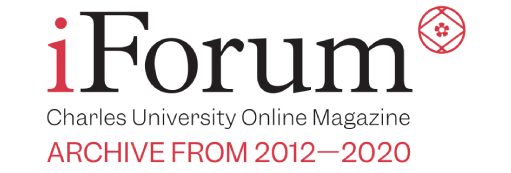2 February 2010
Study and Information Services Centre of the library of the Faculty of Arts introduced to students
Study and Information Services Centre of the library of the Faculty of Arts introduced to students Yesterday's introduction of the new Study and Information Services Centre of the library of the Charles University Faculty of Arts brought an end to the difficult four-year process of the ambitious reconstruction. “I started to think the library to be cursed, but now I can see we reached our goal. It was a long ride and by no means easy, but now we can see it was worth it”, said the Dean of the Faculty of Arts, Michal Stehlík, Ph.D.
“Construction of the Centre was the most significant task I had to deal with after assuming my job. I am very happy to put it behind me and focus on new things”, continued the Vice-dean of the Faculty of Arts for development, Mr. Jiří Gregor.
The four years were spent not only by the construction itself. A lot of time was spent redesigning the project of the cenre, doing a complete overhaul of the whole philosophy of the library to match the requirements of the 21st century, a change in the construction contractor, and also extensive archeological research which revealed the ground beneath the Faculty as an interesting and valuable archeological site. Interestingly enough, as the library's director Mrs. Šárka Frantová said, one of the first contributors of books to the library was the Institute of Prehistory and Early History.
The whole project cost 70 million Czech crowns. Majority of the funding came from the state, while the Faculty contributed a minor part. The Metrostav company was contracted for the construction work.
The largest and oldest space in the Study and Information Services Centre is the first floor with the check-out desks, the Red Reading Room, a computer study with stacks of short-term loans and the Team Reading Room with multimedia technology, which will be accessible on a reservation basis for studying in teams. The Red Reading Room is designed for the students from philological programmes and offers a wide selection of fiction and basic textbooks on stacks.
On the floor above, the ground level, there is the Blue Reading Room with an attractive view through a glassed-in gallery. It holds books from the fields of philosophy, art and social sciences and newspapers, magazines and academic journals, with two latest year accessible on stacks. The Green Reading Room on the top floor of the library, built in place of the former Library of Slavic Literatures, is supposed to be the quietest part of the library and will host books from all programmes of history the university offers.
The centre has a capacity of 160 students and will hold up to 250,000 books, 150,000 in the storage and 100,000 on stacks. Each floor has self-service copiers with a possibility of recharging the student or employee card. The computer study allows for printing of documents. Most desks have network connection to accommodate for working on laptops. Lockers are provided for storing personal items while working. All libraries have wireless Internet. Security measures include detection gates and security cameras. The electronic information system running on LCD panels will provide information on lectures, exhibitions and events at the Faculty of Arts. The library system will use RFID chips.
The centre will open on April 1. During the summer, a self-service checkout system will be installed, allowing students to check out books on their own and return them into boxes. This will make checkout desk less busy and more effective, dispatching books from the storage fast and efficiently. The whole library is wheelchair-friendly.
The introduction of the Study and Information Services Centre was a unique opportunity to look behind the scenes. The office space for four employees and three student assistants will be minimal, because “librarians should always be at hand”. Visitors also took a tour of the special depository for rare books, the storage and technical support spaces. A necessary part of the library, built underground close to the Vltava river, is a concrete basin in the foundation of the library that prevents leakage and protects the books from natural catastrophes.
(Marie Kohoutová)
Translation: Jaroslav Švelch
